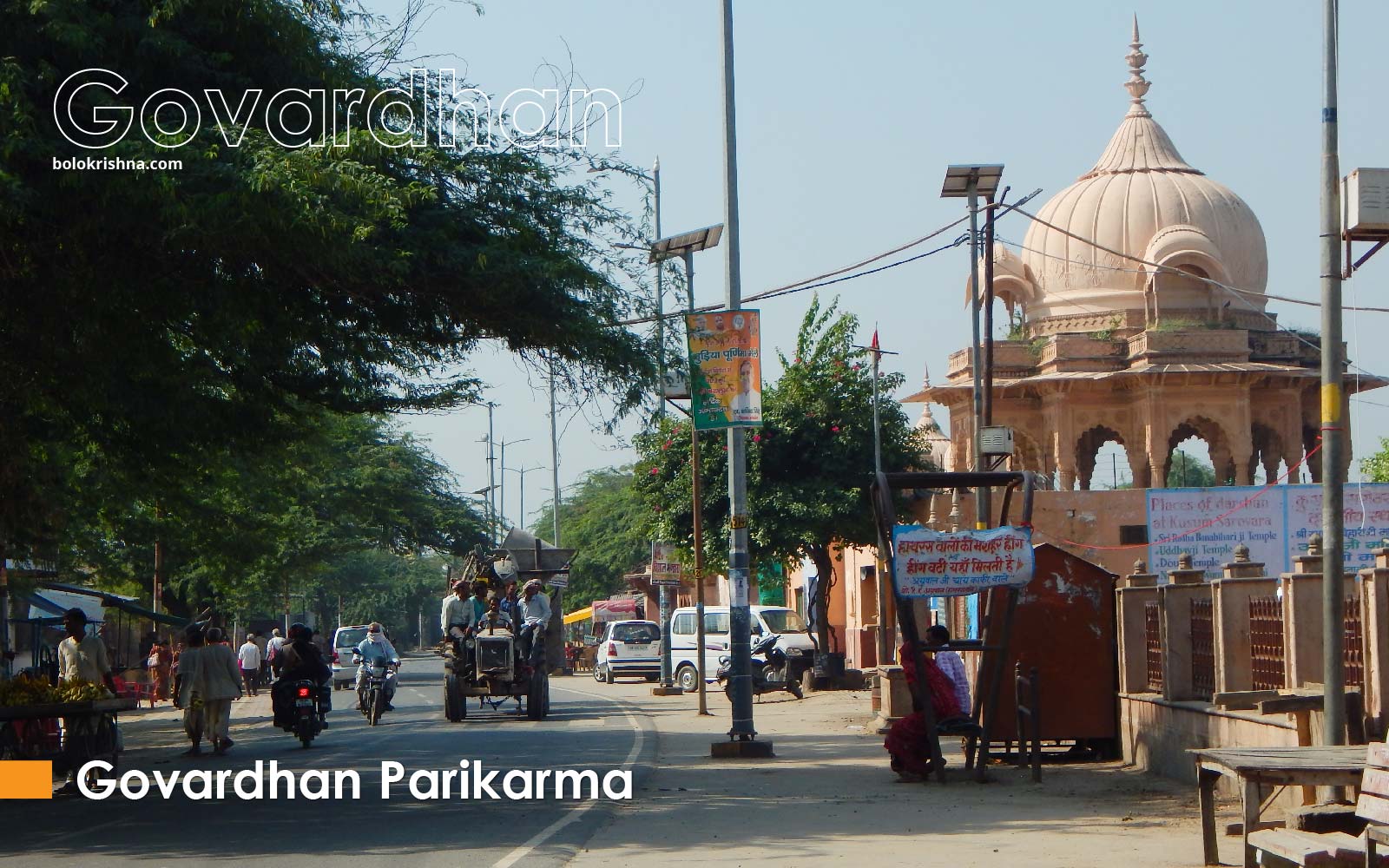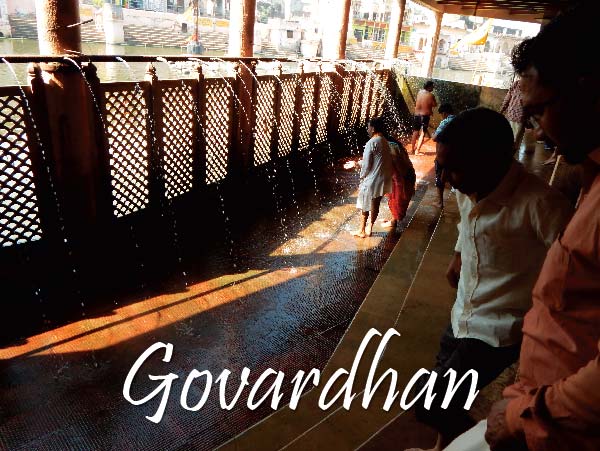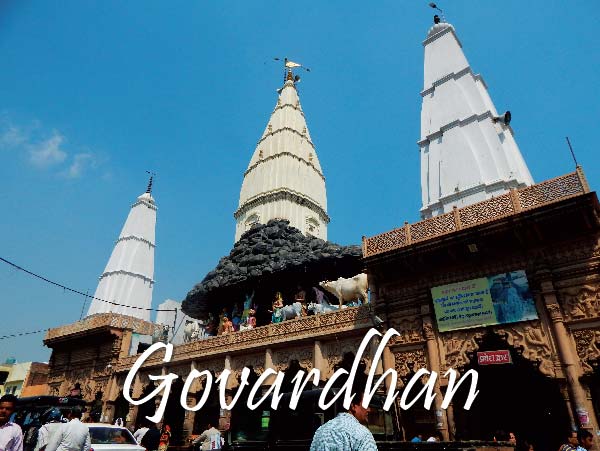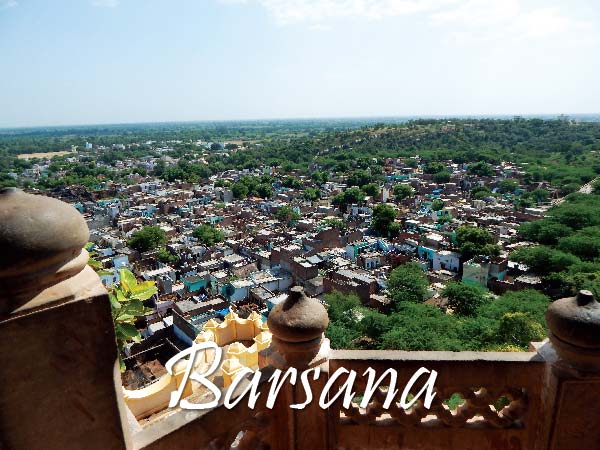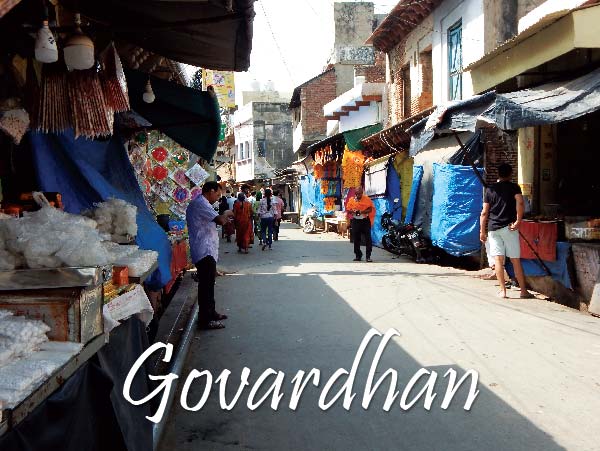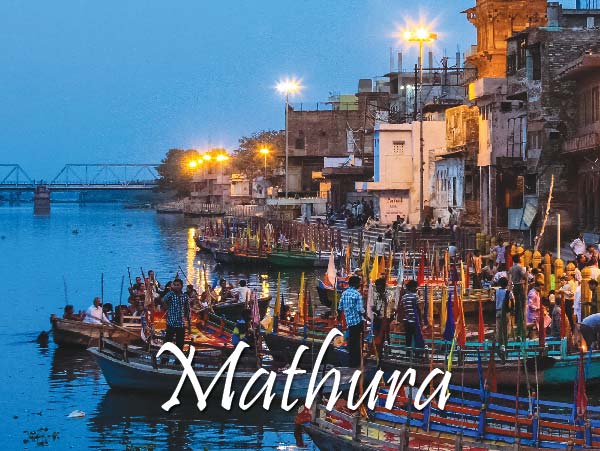Govardhan Parikarma Marg 23kms long

Govardhan Parikarma The birth place of Shri Radha Rani in brajbhoomi.
Govardhan Parikarma
Govardhan Parikrama is a sacred circumambulation or pilgrimage that revolves around the Govardhan Hill, a prominent landmark in Brajbhoomi associated with Lord Krishna’s pastimes. The Govardhan Parikrama holds immense religious significance and is considered a deeply spiritual journey for devotees.
The Govardhan Parikrama is traditionally performed by walking around the Govardhan Hill in a clockwise direction, covering a distance of approximately 23 kilometers. It is believed to be a way of paying homage to Lord Krishna’s divine act of lifting the Govardhan Hill on his little finger to protect the residents of Braj from the wrath of Lord Indra.
The parikrama begins at the Manasi Ganga, a sacred lake near the Govardhan Hill. Devotees offer their prayers and take a dip in the holy waters of Manasi Ganga, seeking purification and spiritual blessings before commencing the circumambulation.
As the devotees start their journey, they traverse the picturesque pathways that wind their way around the Govardhan Hill. The path is adorned with numerous temples, sacred shrines, and sacred spots associated with Lord Krishna’s leelas. Devotees pause at these spots to offer their prayers, chant mantras, sing bhajans (devotional songs), and absorb the divine energy present in the surroundings.
One significant spot on the parikrama route is the Radha Kund and Shyam Kund. These are two sacred ponds believed to be intimately connected with Radha and Krishna’s divine love. Devotees take a holy dip in these ponds, considering it spiritually purifying and an act of seeking Radha and Krishna’s blessings.
Throughout the Govardhan Parikrama, devotees chant the holy names of Krishna, sing devotional songs, and engage in spiritual discussions. The atmosphere is filled with devotion, joy, and a sense of surrender to the divine.
The parikrama concludes at the starting point, Manasi Ganga, where devotees offer their final prayers and express their gratitude to Lord Krishna for the opportunity to undertake this sacred journey.
Govardhan Parikrama holds deep spiritual significance and is believed to bestow immense blessings upon those who undertake it with sincerity and devotion. It is considered an act of surrender and a way to express love and reverence for Lord Krishna.
Apart from the traditional walking parikrama, devotees also perform Govardhan Parikrama by offering obeisance at various sacred spots around the Govardhan Hill, either by walking or by prostrating themselves. Some devotees opt for circumambulation in vehicles, bicycles, or even by touching each step with their hands and forehead.
The Govardhan Parikrama is not only a physical journey but also a metaphorical one. It symbolizes the devotee’s journey towards spiritual growth, the path of devotion, and the understanding of the eternal love between Radha and Krishna.
Thousands of devotees and pilgrims undertake the Govardhan Parikrama every year, especially during important festivals like Govardhan Puja and Annakut, when the entire Brajbhoomi comes alive with devotion and festivities.
The Govardhan Parikrama is an opportunity for devotees to connect with the divine, seek blessings, and experience the divine leelas of Lord Krishna in a profound and personal way. It is a cherished and spiritually enriching experience that strengthens one’s faith, devotion, and love for Lord Krishna and deepens the understanding of his divine presence in Brajbhoomi.
Radha Kund
Radha Kund, located in the town of Govardhan in Brajbhoomi, is a sacred and highly revered pilgrimage site associated with the eternal love of Lord Krishna and Radha. It is considered one of the holiest and most significant lakes in the region, holding immense religious and spiritual importance for devotees.
Radha Kund is believed to be the divine pond where Radha and Krishna, the divine couple, engaged in their eternal pastimes and expressed their divine love for each other. According to mythology, the kund (pond) was created by Lord Krishna himself by striking his flute on the ground, allowing the celestial waters of the Yamuna River to flow into the depression formed by his flute.
The kund is associated with numerous leelas (divine activities) of Radha and Krishna. It is said to be the place where they would meet and engage in secret romantic rendezvous, exchanging their loving glances, engaging in playful water sports, and expressing their deepest emotions for each other.
The Radha Kund is considered to be a highly sacred and spiritually purifying body of water. Devotees believe that taking a dip in the holy waters of Radha Kund can cleanse their sins, grant spiritual purification, and bring them closer to the divine love of Radha and Krishna.
The kund is surrounded by beautiful ghats (steps) on all sides, offering devotees a place to sit, meditate, and absorb the divine vibrations of the place. The tranquil and serene ambiance of Radha Kund creates an atmosphere conducive to deep introspection, spiritual contemplation, and inner awakening.
The area around Radha Kund is adorned with numerous temples and ashrams dedicated to Radha and Krishna. The Shri Radha Kund Temple, situated on the banks of the kund, is a prominent pilgrimage site where devotees offer their prayers and seek blessings. The temple complex also includes shrines dedicated to various other deities associated with Radha and Krishna’s leelas.
A unique ritual observed at Radha Kund is the Radha Kund Snan, or the bathing ceremony. Every year, on the auspicious day of Bahulastami, devotees gather to take a holy bath in the waters of Radha Kund. The bathing ceremony is believed to be highly meritorious and is considered a way to attain divine grace and blessings.
Radha Kund is also closely associated with the famous festival of Radha Rani’s appearance day, known as Radhashtami. During this festival, devotees gather at Radha Kund to celebrate the divine love and devotion of Radha towards Krishna.
Visiting Radha Kund provides devotees with an opportunity to experience the divine presence and immerse themselves in the eternal love of Radha and Krishna. It is a place of deep spiritual significance, where devotees can connect with the divine, seek spiritual solace, and experience a profound sense of love, devotion, and surrender.
For devotees and pilgrims, Radha Kund represents the epitome of divine love and serves as a reminder of the profound spiritual bond between Radha and Krishna. It is a sacred place where devotees can offer their prayers, engage in devotional practices, and deepen their connection with the divine couple, seeking their blessings and grace.
Govardhan Parikarma Significanace
“Govardhan Parikrama” is a significant ritual or tradition in Hinduism that involves circling around the Govardhan Hill, located in the Mathura district of Uttar Pradesh, India. It holds great importance in the religious and cultural practices of the people who follow the Hindu faith.
The Govardhan Hill is believed to be associated with Lord Krishna, an important deity in Hinduism. According to Hindu mythology, Lord Krishna lifted the Govardhan Hill on his little finger to protect the people of the village of Vrindavan from torrential rains and floods. This act of divine intervention is known as the “Govardhan Leela” or the “lifting of Govardhan Hill” by Lord Krishna.
The significance of the Govardhan Parikrama lies in the devotion and faith of the devotees who undertake this circumambulation of the hill. It is believed that by walking around the Govardhan Hill, devotees can seek blessings, purification, and spiritual growth. The Parikrama is often seen as a form of worship and a way to express devotion to Lord Krishna.
During the Govardhan Parikrama, devotees walk a specific distance, usually around 23 kilometers, around the base of the hill. They often chant prayers, sing devotional songs, and offer prayers to Lord Krishna throughout the journey. Many pilgrims consider it a sacred pilgrimage and undertake the Parikrama with utmost dedication and reverence.
Apart from its religious significance, the Govardhan Parikrama also holds cultural and historical importance. It has been a tradition followed by generations of devotees and is seen as a way to connect with the rich heritage and traditions of Hinduism.
In simple terms, the Govardhan Parikrama is a religious practice in which people walk around the Govardhan Hill in India to seek blessings and express their devotion to Lord Krishna. It is considered a sacred pilgrimage and holds great cultural and historical value in Hinduism.
Temples Temples of Govardhan
Vrindavan is dotted with numerous temples, each associated with a specific episode from Krishna’s life. The Banke Bihari Temple, ISKCON Temple, and Prem Mandir are among the most popular places of worship in Vrindavan.
Mansi Ganga Temple Govardhan
Daan Ghati Temple Govardhan

